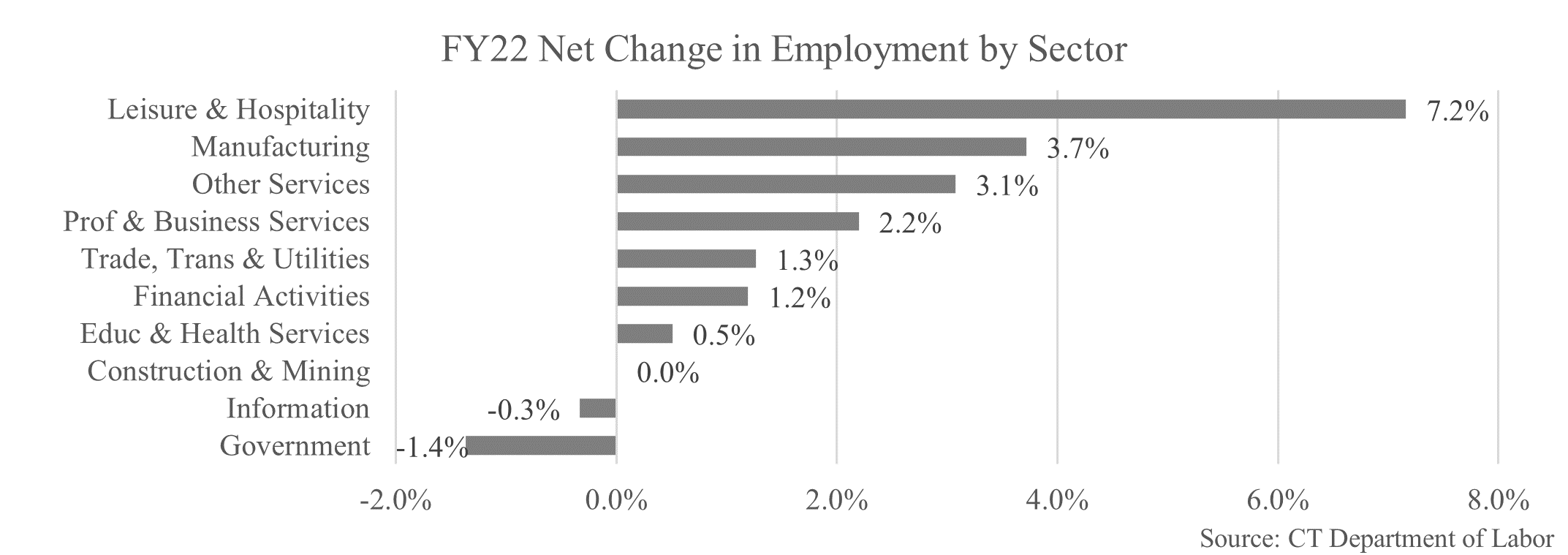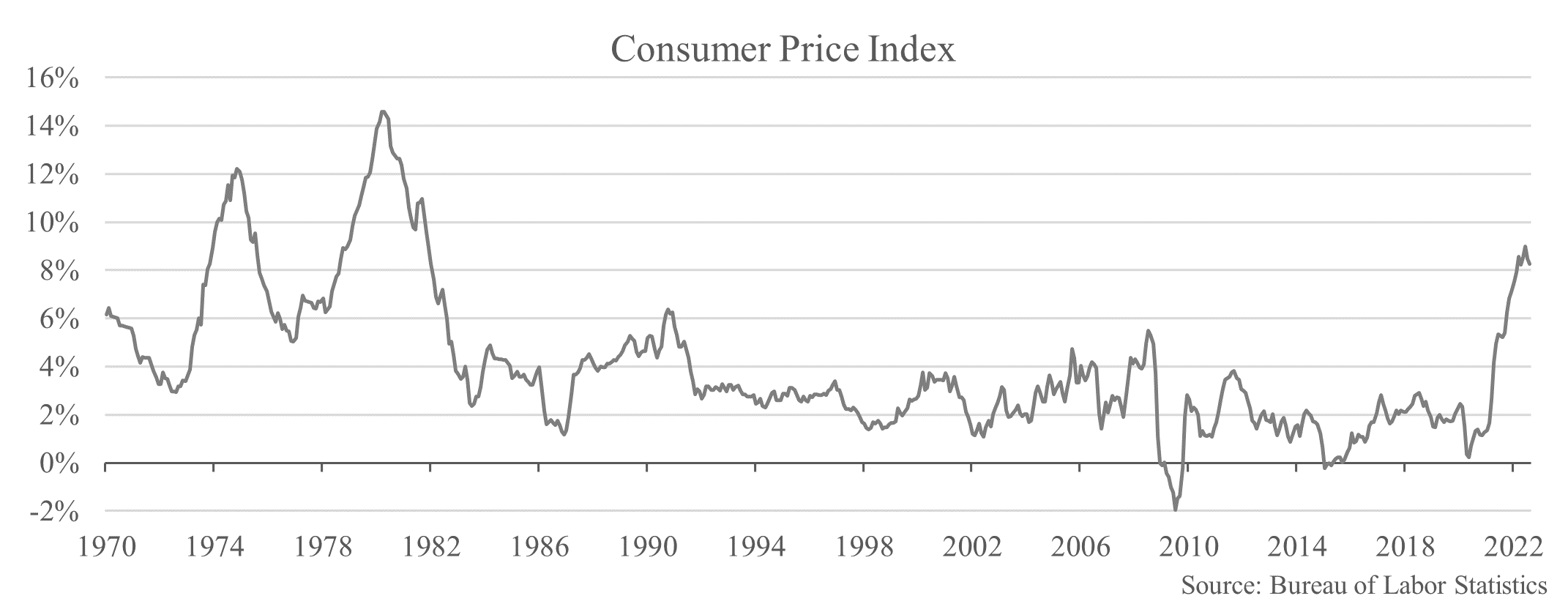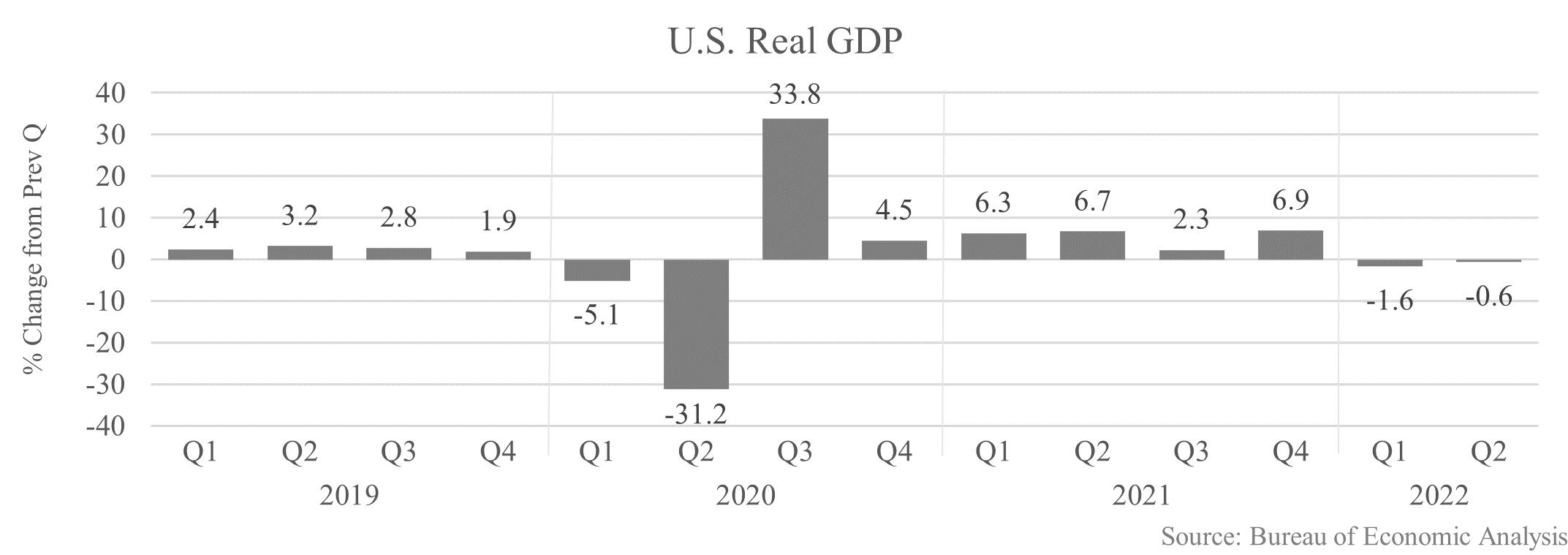
September 30, 2022
The Honorable Ned Lamont
Governor of the State of Connecticut
State Capitol
Hartford, Connecticut
Dear Governor Lamont,
I write to provide you with the legal financial statements for Fiscal Year 2022. These statements have been prepared in accordance with statutory provisions designed to incorporate designated expenditure accruals of Generally Accepted Accounting Principles into the budget process. It is important to recognize that these statements have not been fully audited at this writing. The figures are subject to final audit adjustment and should be viewed as preliminary results. Final audited statements will be released on or before December 31, 2022.
The General Fund ended Fiscal Year 2022 with a surplus of $1,261,379,211. In a typical year, once the audit is completed, the surplus would be transferred to the Budget Reserve Fund (BRF). However, the balance in the BRF has reached the statutory limit of 15% of current year net General Fund appropriations. Therefore, a separate provision of the Connecticut General Statutes (CGS) will apply as described below. The Transportation Fund had an operating surplus of $156,627,192, which left a positive fund balance of $397,760,868 at the close of Fiscal Year 2022.
In FY 2022, for the fifth consecutive year, significant progress was made toward building the balance of the BRF. This was primarily due to the revenue volatility cap, first implemented in FY 2018. This statutory provision requires revenues above a certain threshold to be transferred to the BRF. For FY 2022, the cap was just over $3.5 billion for estimated and final income tax payments and revenue from the Pass-through Entity tax. At year-end, a volatility transfer of $3.05 billion was made to the BRF.
Prior to the close of FY 2022, the balance of the BRF was just over $3.1 billion. Adding the $3.05 billion volatility transfer brought the BRF total to $6.2 billion, or 27.9% of net General Fund appropriations for FY 2023. As a result, the BRF was temporarily $2.85 billion above the statutory 15% cap. According to CGS Section 4-30a (c)(1)(A), no further transfers will be made to BRF. Instead, the State Treasurer must transfer the balance above the 15% threshold as an additional contribution to the State Employee Retirement Fund (SERF) and to the Teachers' Retirement System (TRS). Earlier this month, the State Treasurer transferred $1.9 billion to SERF to reduce unfunded pension liability, with the remaining balance of $903.6 going to TRS.
In addition, once the audit of FY 2022 operations is complete and the General Fund surplus is confirmed, the $1.26 billion surplus will be transferred to SERF to further reduce unfunded service liability. Achieving and surpassing the 15% threshold represents an important benchmark for Connecticut. Due to fiscal discipline and hard work, our state is in a much stronger position to provide critical services to those in need and to weather the public health and fiscal crisis brought on by the COVID-19 pandemic. According to the plan’s actuaries, through these actions Connecticut will save taxpayers $11.5 billion over the coming decades.
General Fund
The FY 2022 budget plan as initially formulated included a built-in General Fund surplus of $274.9 million. Unlike the previous fiscal year, the General Fund never had a projected deficit in FY 2022. Surplus estimates improved from the original budget plan due to a combination of stronger than expected revenue growth and lower than anticipated spending. In April, surplus projections that had grown to approximately $2.1 billion were reduced due to Public Act No. 22-118, the FY 2023 budget bill. Certain provisions affected FY 2022 including: 1) eliminating the use of Federal American Rescue Plan Act funds for General Fund revenue replacement, 2) transferring General Fund revenue from FY 2022 to FY 2023 to support Child Tax Credit payments, 3) using FY 2022 lapsing funds to support the cost of the labor agreement, and 4) using FY 2022 lapsing funds to support spending in FY 2023.
General Fund expenditures totaled $20,655,130,552. This represented an increase of $1.2 billion, or 6.3% above FY 2021 spending levels. Several appropriations saw large spending increases that accounted for much of the growth in FY 2022. The largest were contributions to state pension plans. The employer contribution to the Teachers’ Retirement System grew by $194 million, or 15.5% over FY 2021. The General Fund employer contribution to the State Employee Retirement System (SERS) increased by $145 million or 11% over FY 2021, primarily due to an increase in payments toward unfunded pension liability.
The second largest category of growth can be attributed to GAAP-based budgeting accruals (for salary & wages, accounts payable, and Medicaid) that work to align expenditures more closely to the year they were incurred and mitigate growth in the so-called GAAP deficit. FY 2022 net changes in GAAP accruals were $178.5 million greater than FY 2021 amounts. The primary cost driver was the salary & wage accrual, which included employee bonuses, retroactive payments and associated fringe benefits for amounts earned in FY 2022 but paid out in FY 2023. General Fund salary and wage costs (from all appropriations) totaled $2.88 billion in FY 2022, which was $54.7 million higher than FY 2021 and represented a nominal growth rate of 1.9%. However, the salary and wage accrual added an additional $101.4 million in salaries charged to FY 2022 for a real growth rate of 5.2%.
These categories were followed by a $123.4 million increase in expenditures in support of higher education, a $109.6 million increase in debt service, a $106.5 million increase in aid to municipalities, and a $104.5 million increase in Medicaid. Together these large spending items explain 80% of the growth in FY 2022. The most significant reduction in General Fund accounts was $14 million decrease in the Retiree Health Insurance spending due to the implementation of the Medicare advantage program, which achieved year-over-year savings despite higher enrollment in the plan.
General Fund revenues totaled $21,990,935,167, which represented an increase of $1.5 billion, or 7.1% above FY 2021 levels. Collections in the six largest tax categories all ended the year above their budget targets. The strongest performer was the Pass-Through Entity Tax (PET) which is levied on Partnerships and S-Corporations. PET receipts ended the year $821.8 million or 55% above the budget plan. Estimated and Final income tax collections finished the year $1.3 billion or 42% over target. Withholding finished $514.3 million or 7% above its budget target. Compared with prior year realized amounts, FY 2022 withholding receipts increased by $642.4 million or 8.9%. A strong stock market, continued job growth, and increased wages contributed to increased collections. Due in part to increased consumer demand and high inflation, the Sales and Use Tax came in $543.5 million or 13% above the budget plan. The complete statement of estimated and realized revenue for FY 2022 is presented in Schedule B-2.
Special Transportation Fund
Special Transportation Fund (STF) spending totaled $1,723,890,015 in FY 2022, increasing by $25.4 million or 1.5% compared with FY 2021. The largest category of growth was debt service, which grew by $79 million or 11.9% above FY 2021 levels. GAAP-based budgeting accruals, mostly for salary and wages, attributed to a $21.2 million increase over FY 2021. The Transportation Fund employer contribution to the State Employee Retirement System (SERS) increased by $15.6 million or 11.4% over FY 2021, largely due to an increase in payments toward unfunded pension liability. Personal Services, the primary account for salaries, grew by $14.8 million or 6.4%.
Overall spending growth in the STF was mitigated by large reductions in two-line items. Expenditures in the Rail Operations appropriation decreased by $83.6 million, or 38.8% compared with FY 2021, and Bus Operations declined by $40.1 million, or 19.9%. It should be noted, these decreases in STF spending did not result in reductions to services or lower subsidies for public transit services. Rather, in accordance with Special Act No. 21-15, temporary federal pandemic assistance funding was used to supplant STF expenditures for transportation operations.
Transportation Fund revenue totaled $2,000,854,493, which was $111.2 million or 5.9% above the budget plan for FY 2022. The Oil Companies Tax outperformed the budget target by $136.7 million or 54.6% due to higher fuel prices and increased consumption post Covid-19. The Sales Tax - DMV outperformed the budget target by $28 million or 30%. In contrast, the Motor Fuels Tax came in 18.8% or $90.5 million below its budget target due to the suspension of the excise tax on gasoline from April 1, 2022 to November 30, 2022. The complete statement of Transportation Fund estimated and realized revenue for FY 2022 is presented in Schedule C-2.
Economic Outlook
Connecticut’s budget results are ultimately dependent upon the performance of the national and state economies. FY 2022 continued the rapid recovery from the COVID-19 recession and was characterized by record high inflation, a tight labor market, and a hot housing market.

In the beginning of the fiscal year, Connecticut’s unemployment rate stood at 6.3%—down by almost half just a year and half after the deepest layoffs the state had seen since the great recession. Nonfarm payroll employment totaled 1,626,600 while 117,700 residents remained unemployed. By the end of the fiscal year, Connecticut’s unemployment rate dropped to 4% with 76,000 people remaining unemployed. Over the course of the fiscal year the state added 25,700 nonfarm jobs and by June the state recovered 83.4% of the 292,400 jobs lost in March and April of 2020. Three industry sectors gained jobs above pre-pandemic levels: construction, professional and business services, and trade, transportation, and utilities. Seven industry sectors experienced annual growth while one remained flat and two declined. Leisure and hospitality, the industry most affected by the pandemic, had the greatest net change in employment.

While labor market conditions have improved drastically, Connecticut still has work to do to fill open jobs and bring back those who left the labor force. In June of 2022, there were 113,000 jobs open with only 76,000 people actively looking for jobs. The pandemic severely curtailed the labor force participation rate in Connecticut due to slow population growth, early retirement, fear of the virus, and childcare issues.
On a national level, over the course of FY22, the U.S. added 5.5 million jobs and the unemployment rate fell from 5.4% to 3.6%. The total number of unemployed persons fell from 8.7 million to 5.9 million, a decrease of 2.8 million. Job growth over this period was very strong with the U.S. recovering 100% of the 22 million jobs lost in March and April of 2020. All industry sectors grew over FY22, and notable job gains occurred in leisure and hospitality, professional and business services, and trade, transportation, and utilities.
Inflation rose steeply in FY22, reaching highs last seen during the 1980s. The consumer price index peaked at 9% in June 2022. Prices across the board grew with high gas prices, groceries, and rent hurting households across the country. Price growth was due to increased demand coupled with supply-chain issues, scarcity of materials, and labor shortages. The Federal reserve raised interest rates several times throughout FY22 bringing rates above zero for the first time since the pandemic. This shift in monetary policy is expected to cool demand and bring down inflation over time.

After a major plunge in March of 2020, the stock market quickly rallied and shifted to a bull market, erasing most losses by August 2020. Expansionary fiscal policy in response to the pandemic encouraged spending and investing, while Federal Reserve monetary policy kept interest rates low, making it cheaper to borrow. Throughout the first half of the fiscal year, the stock market reached all-time highs peaking in January. The second half of the fiscal year saw dramatic stock market declines as news of the Russian invasion of Ukraine, high inflation, negative GDP, and shifting monetary policy rattled investors.
FY22 saw the continued boom of the housing market both nationally and in Connecticut due to work-from-home requirements, increased household balance sheets, low-interest rates, and an exodus from cities to suburbs. A trend emerged of low inventory and high prices reducing overall sales. Over the fiscal year in Connecticut, sales of all property types decreased 20%, according to Berkshire Hathaway Home Services while the median sales price increased 7%. Average days on the market decreased from 37 days to 27 days. At the same time, the average sales price of properties sold in Connecticut was higher than the list price. While this was good news for existing homeowners, rapidly increasing prices excluded many first-time homebuyers from the market.
The third and fourth quarters of 2021 saw growth in Gross Domestic Product (GDP) while the first and second quarters of 2022 saw declines in GDP. Discussions of whether the U.S. was in a recession occurred due to the two consecutive quarters of decline, however a strong labor market held economists back from labeling an official recession. Connecticut followed national GDP trends, growing 2.5% in the third quarter and 7.7% in the fourth quarter of 2021, and declining by 1.4% in the first quarter of 2022. GDP shrank mostly due to the trade deficit, reductions in business inventory, and slowed consumer demand.

My office also issues an Annual Comprehensive Financial Report as an accounting supplement to the budgetary report. This annual report includes financial statements for all state funds and component units prepared in accordance with Generally Accepted Accounting Principles (GAAP). From a balance sheet perspective, the GAAP unassigned fund balance in the General Fund was a negative $660,749 million as of June 30, 2021. I will report the new unassigned fund balance figure for Fiscal Year 2022 no later than February of 2023 in accordance with U.S. Securities and Exchange Commission (SEC) requirements.
If you have any questions on this report, please do not hesitate to contact me.
Sincerely,

Natalie Braswell
State Comptroller